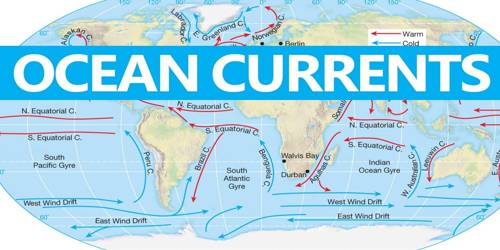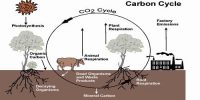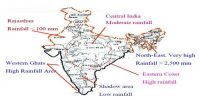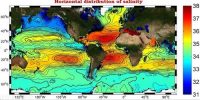Ocean currents are like river flow in oceans. They represent a regular volume of water in a definite path and direction. It flows for great distances, and together, create the global conveyor belt which plays a dominant role in determining the climate of many of the Earth’s regions. Ocean currents are influenced by two types of forces namely:
(1) primary forces that initiate the movement of water;
(2) secondary forces that influence the currents to flow.
The primary forces that influence the currents are:
(i) heating by solar energy;
(ii) wind;
(iii) gravity;
(iv) coriolis force.
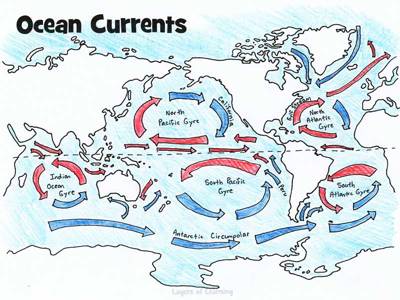
Heating by solar energy causes the water to expand. That is why near the equator, the ocean water is about 8 cm higher in level than in the middle latitudes. This causes a very slight gradient and water tends to flow down the slope. Wind blowing on the surface of the ocean pushes the water to move. Friction between the wind and the water surface affects the movement of the water body in its course. Gravity tends to pull the water down to the pile and create gradient variation. The Coriolis force intervenes and causes the water to move to the right in the southern hemisphere and to the left in the southern hemisphere. These large accumulations of water and the flow around them are called Gyres. These produce large circular currents in all the ocean basins. Knowledge of surface ocean currents is essential in reducing costs of shipping since traveling with them reduces fuel costs. In the wind powered sailing-ship era, knowledge of wind patterns and ocean currents is even more essential.
Differences in water density affect the vertical mobility of ocean currents. Water with high salinity is denser than water with low salinity and in the same way cold water is denser than warm water. Denser water tends to sink, while relatively lighter water tends to rise. Cold-water ocean currents occur when the cold water at the poles sinks and slowly moves towards the equator. Warm-water currents travel out from the equator along the surface, flowing towards the poles to replace the sinking cold water.
